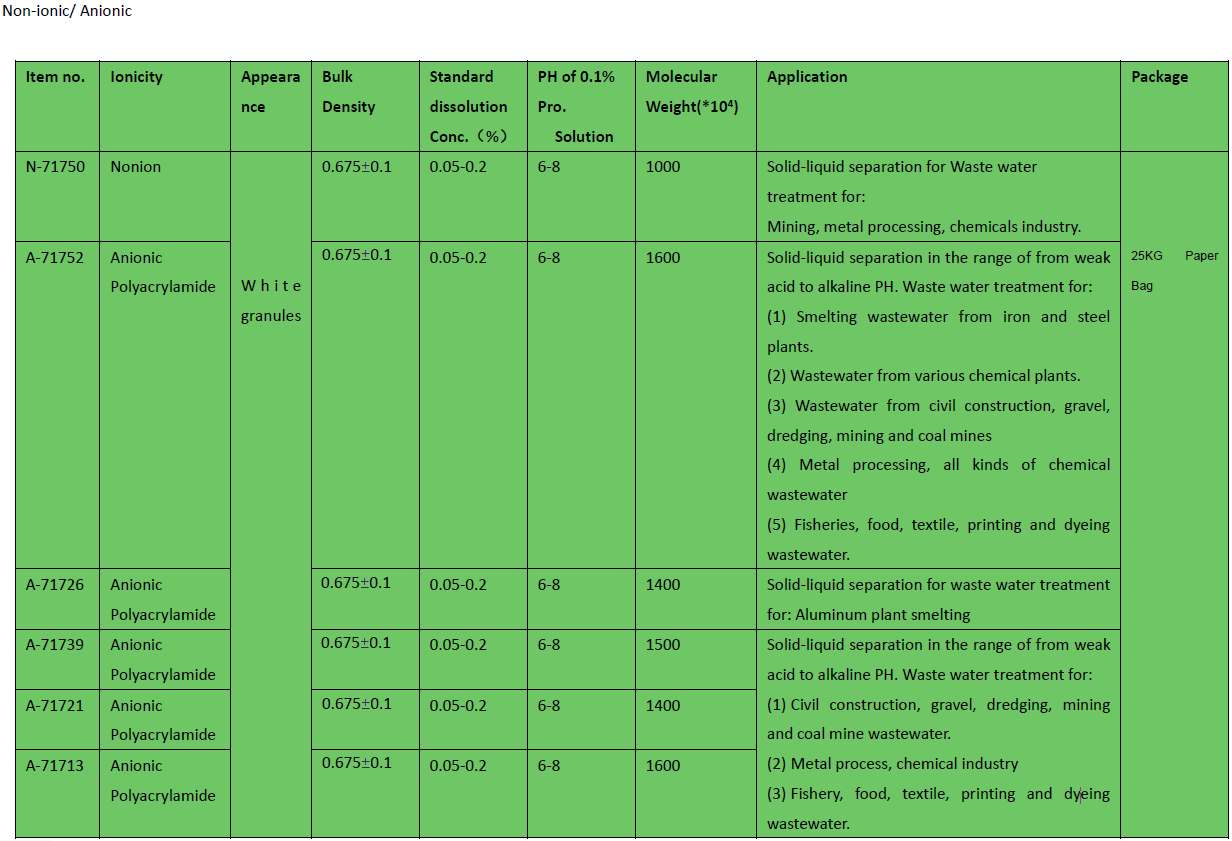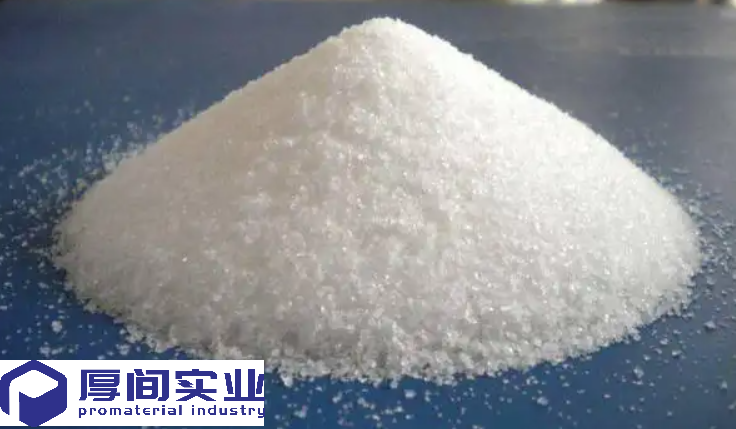Leading-edge Technology,
Stable Quality, Happy to meet various customers needs.
Polymer flocculants
promote floculation by neutralizing the superficial electric charge of sludge
particles in water, and unstabilizing each suspended solid.
The activated
functional group inside the polymer flocculant then causes the particles to
absorb to each other.
The cross-linking
effect of the particles further flocculates the sludge particles and promotes
the formation of still larger flocs.
In the premise of
technology and high performance comparable to international flocculants, our
cost performance advantage is obvious. We are committed to develop various
types of anionic, cationic and non-ionic products for various applications.
Advantages
1.Excellent
floculation
2. Effective at
small dosages
3. Superior clarity of waste water
4. Outstanding filtration and dewatering properties that enhance sludge
dewatering efficiency
5. Product development and production management give primary consideration to
safety
6. In addition to general industrial use including Coal washing, sand washing, the
products are also available to respond to paper-making, dyeing, textile
industry standards wide-ranging needs.
Basic structure

Flocculant
Introduction
Shanghai
Promaterial Industry Co., Ltd develop and provide chemicals Speciality for
water treatment.
Product Series: Various types of flocculants (anionic, cationic,
non-ionic) are available for the purification of coal, sand, mine wastewater,
general industrial wastewater, textile, printing and dyeing, paper wastewater,
sewage treatment plants, domestic wastewater, etc.

Precautions
1. Usage (safety
goggles and rubber gloves recommended)
When handling large volumes of powder products, powder dust may scatter. When
handling these products, be sure to wear safety goggles, rubber gloves, and a
dust-protective mask.
If the powder product accidentally gets into your eye, do not rub your eye.
Rinse with a steady flow of water for at least 15 minutes, and then consult a
medical specialist.
If the powder product adheres to your face, hands and feet, or any other
exposed skin, wash it away with soap.
If the powder product spills onto the floor or ground, immediately wipe it up
with a cloth or paper. Spilled powder readily absorbs moisture and becomes
extremely slippery, so after wiping, flush the area with a large volume of
water. Scattering sand is also effective as an emergency measure.
For more information, please see the " Material Safety Data Sheet"
supplied with the product concerned.
2. Safe storage
(product life)
Powder type products come in paper bags with inner plastic bags. As they are
all packages designed for indoor storage, please store the product in a well-ventilated
room.
The shelf life of powder products is a one year. It may differ slightly
depending on storage conditions, but please use the product within the
specified period.
The storage stability of dissolved products is extremely low. Although it
differs among anionic, nonionic, and cationic products, please try to use them
as quickly as possible. Note also that performance degradation occurs quicker
particularly in cationic products.
3. Corrosiveness
(products and liquid solutions)
Powder products are non-corrosive toward metals in general. However, the liquid
products are highly corrosive, so avoid contact with steel, aluminum, and other
general metals.
On the other hand, dissolved products are generally corrosive when their
electric conductivity increases. Cationic solutions particularly become
corrosive because they have lower pH levels (they are more acidic).
Based on the above points, recommended materials for equipment that come into
contact with the emulsion/liquid solution, such as the dissolving unit,
dissolver, mixer, piping, and pump, include hard vinyl chloride resin, FRP and
other plastics, and rust-resistant stainless steel.
When using a steel tank, apply an anti-corrosive coat (coal tar epoxy, etc.) to
the inner liner of the tank.
4. Safety
Shanghai Promaterial industry Co., Ltd read through many materials related with
numerous skin tests and animal experiments to verify the safety of
polyacrylamide. Acrylamide (monomer), the raw material used in polyacrylamide
polymer flocculant, has relatively high toxicity. The safety of Acrylamide
(monomer)-based polyacrylamide was confirmed in 1960 following a test of the a
two-year continuous administration experiment on dogs and rats.
Various other experiments have also been conducted showing that polyacrylamide
is pharmaceutically "chemically stable."
However, when handling large volumes of powder type products and when exposing
your skin to them repeatedly or for a prolonged time, be sure to wear safety
goggles, rubber gloves, and other protective gear. Also be sure to wash your
face and hands after use.
